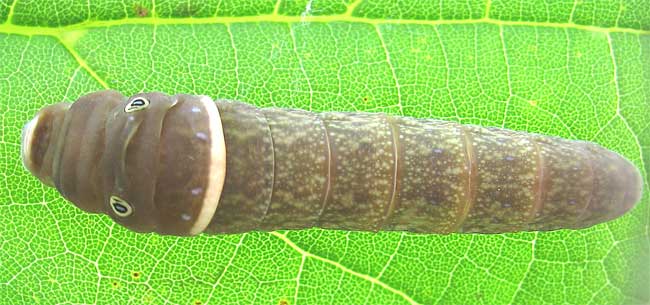Interactions
Human Interactions
C. maculatum has had a few different impacts on humans. Humans are able to
fuel their own energy demands by utilizing the by-products (water and oxygen)
from the photosynthesis process of this plant. Also, Indians have been known to
cleverly use the poisonous effects of this plant for their own predation by poisoning
the tips of arrows. Additionally, there are also a few medical uses that have been
derived from this plant. Small doses of this plant can act as an anesthetic. It has also
been reported that Persian and Greek doctors have used this plant's toxins to treat
arthritis back in the day. However, overdoses will cause paralysis, eventual speech
loss, and death due to respiratory failure.
Lepidoptera Interaction
C. maculatum serves at the bottom of the food web as a primary producer. As a
result, other organisms may feed off of this plant series in order to obtain their own
energy. A few larval forms of the Lepidoptera species have been able to overcome
the toxicity of the plant, using it as a food source. Pictured below is a larval form of
the species Papilio glaucus, which falls under the order Lepidoptera. Naturally,
insects can also help to pollinate the plant as they travel from plant to plant, carrying
over pollen grains.
Virus Interactions
C. maculatum is prone to a number of viruses such as the celery mosaic, alfalfa
mosaic, ringspot and carrot thin leaf viruses. However, despite the pathogenic
advance of these viruses, growth of this plant is only stunted. These viruses are not
adequate enough in destroying the entire plant itself. The globe artichoke is another
organism that is attacked by the ringspot virus.
Wind & Rain Interactions
C. maculatum has been able to reproduce due to its interactions with a couple of
abiotic factors as well. Wind is major component that aids in the dispersal of this
organism. Wind can carry seeds to new regions as well as rain. Seeds can be carried
by water and float on down to ... maybe somewhere near you! The seeds from C.
maculatum also stick to farm equipment, clothing and other automobiles and have
been dispersed that way as well.

